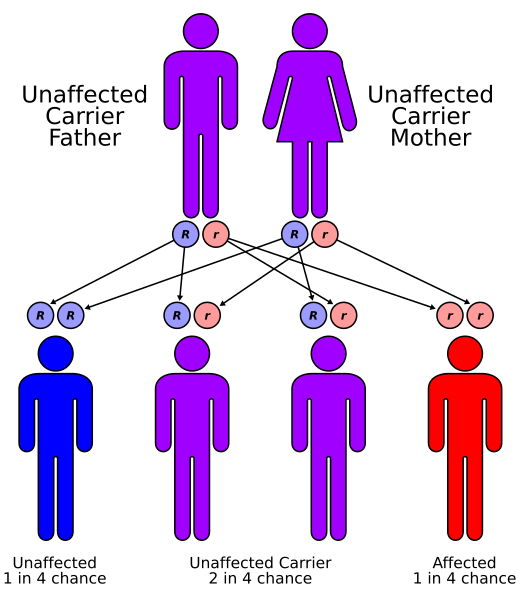Thalassaemia
Thalassaemia is a family of inherited blood disorders that result in abnormal haemoglobin production. It is also known as Mediterranean anaemia or Cooley's anaemia. This condition primarily affects populations of Greek, Italian, Middle Eastern, South Asian, and African descent.
Signs and Symptoms
Thalassaemia symptoms vary depending on the type and severity. Common symptoms include feeling tired, pale skin, enlarged spleen, yellowish skin, and dark urine. Severe cases may present with bone deformities, particularly in the face and skull, and slowed growth rates in children. Patients may also experience heart problems such as congestive heart failure and abnormal heart rhythms.

Complications include iron overload, which can damage the heart, liver, and endocrine system, and an increased risk of infections, particularly if the spleen has been removed.
Haemoglobin Structural Biology
Normal human haemoglobin consists of two alpha-like and two beta-like chains. The synthesis of these chains is regulated during development, with different types of haemoglobin expressed at various stages of life. Adult haemoglobin (Hb A) is predominant from six months of age onward, while foetal haemoglobin (Hb F) is significant during foetal development.
Cause
Thalassaemia is caused by genetic mutations affecting haemoglobin production. These mutations are usually inherited in an autosomal recessive pattern. The disorder can offer some protection against malaria, explaining its prevalence in regions with high malaria risk.

Pathophysiology
Thalassaemias are classified based on which haemoglobin chain is affected: alpha or beta. Alpha-thalassaemias involve decreased alpha-globin production, leading to an excess of beta chains. Beta-thalassaemias involve mutations in the HBB gene on chromosome 11, affecting beta-globin production.
Diagnosis
Diagnosis involves blood tests, haemoglobin electrophoresis, high-performance liquid chromatography, and genetic testing. The Mentzer index can suggest the possibility of thalassaemia, especially in resource-limited settings.
Management
The treatment of thalassaemia varies with severity. Asymptomatic individuals may require no treatment, while those with severe disease need regular blood transfusions, iron chelation therapy, and folic acid supplementation. Bone marrow transplantation may offer a potential cure, especially in young patients with an HLA-matched donor.
Red Blood Cell Transfusions
Blood transfusions are the mainstay of treatment, especially for severe cases. However, they come with risks, including iron overload, infections, and gall bladder inflammation. Iron overload is managed with chelation therapy using deferoxamine, deferasirox, or deferiprone.
Growth Hormone Therapy
Growth hormone therapy may be beneficial in increasing growth rates in children with thalassaemia.
Bone-Marrow Transplantation
Bone-marrow transplantation is a potential cure for thalassaemia in young patients with an HLA-matched donor. The success rate is high, but the procedure carries risks such as graft-versus-host disease (GvHD).
Prevention
Screening and genetic counselling are recommended for families at risk of thalassaemia. Prenatal screening programmes in countries like Cyprus and Greece have successfully reduced the incidence of the disease.
Epidemiology
Thalassaemia is most prevalent in Mediterranean, Middle Eastern, South Asian, and African populations. The global carrier rate for β-thalassaemia is estimated at 1.5%, with around 80-90 million carriers worldwide.
Research
Gene therapy is being looked at as a potential treatment for thalassaemia. This involves adding a beta-globin gene to hematopoietic stem cells and reintroducing them into the patient's bone marrow after myeloablative conditioning.

Self-assessment MCQs (single best answer)
What is Thalassaemia also known as?
Which populations are primarily affected by Thalassaemia?
Which organ is commonly enlarged in Thalassaemia patients?
What type of inheritance pattern does Thalassaemia follow?
Which of the following is a common complication of Thalassaemia?
What is the mainstay of treatment for severe cases of Thalassaemia?
Which diagnostic test is NOT commonly used for Thalassaemia?
Which therapy is beneficial for increasing growth rates in children with Thalassaemia?
What does Beta-thalassaemia involve?
Which of the following countries has a successful prenatal screening programme for Thalassaemia?
Dentaljuce
Dentaljuce provides Enhanced Continuing Professional Development (CPD) with GDC-approved Certificates for dental professionals worldwide.
Founded in 2009 by the award-winning Masters team from the School of Dentistry at the University of Birmingham, Dentaljuce has established itself as the leading platform for online CPD.
With over 100 high-quality online courses available for a single annual membership fee, Dentaljuce offers comprehensive e-learning designed for busy dental professionals.
The courses cover a complete range of topics, from clinical skills to patient communication, and are suitable for dentists, nurses, hygienists, therapists, students, and practice managers.
Dentaljuce features Dr. Aiden, a dentally trained AI-powered personal tutor available 24/7 to assist with queries and provide guidance through complex topics, enhancing the learning experience.
Check out our range of courses, or sign up now!


